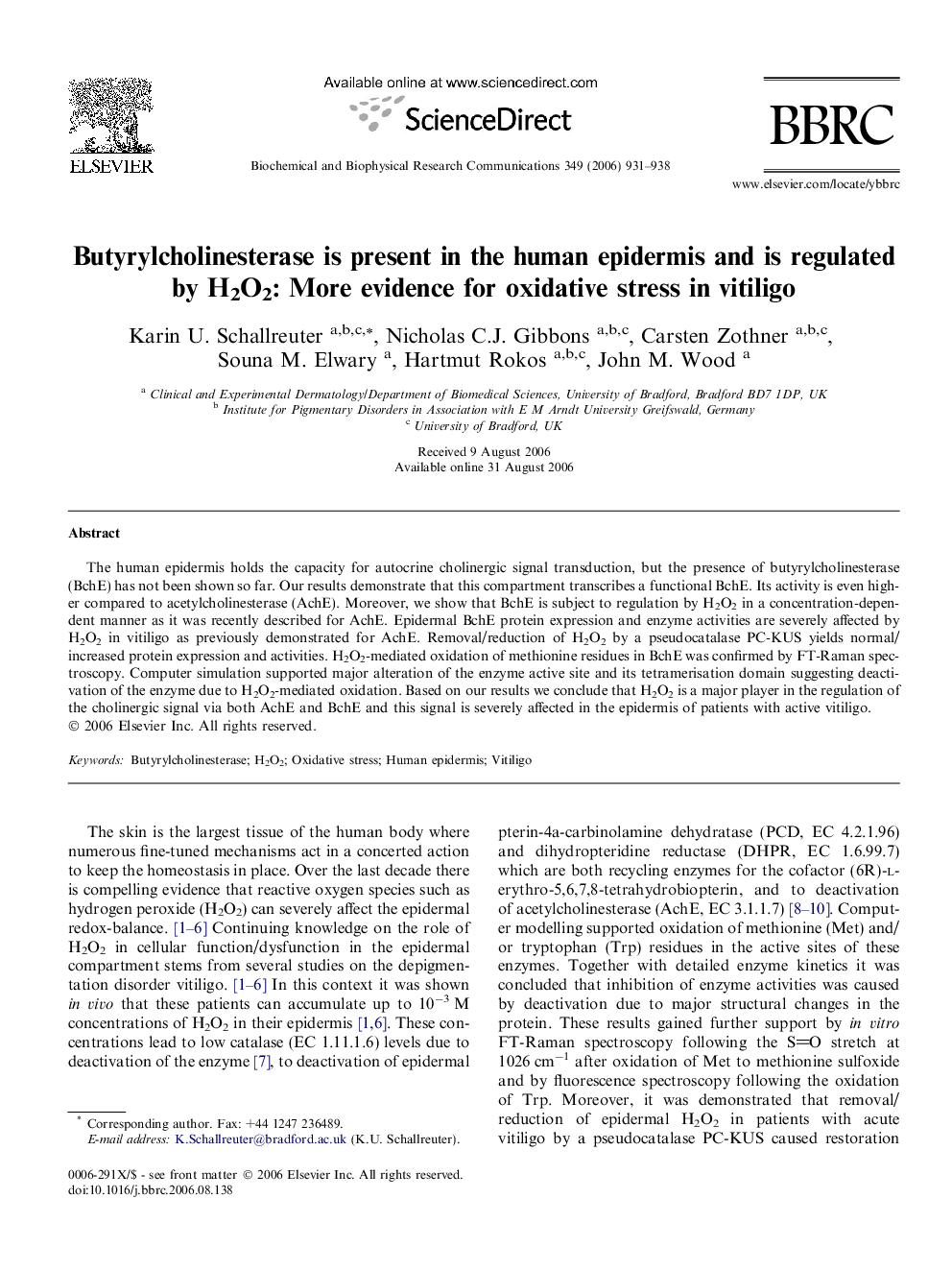| Article ID | Journal | Published Year | Pages | File Type |
|---|---|---|---|---|
| 1938833 | Biochemical and Biophysical Research Communications | 2006 | 8 Pages |
The human epidermis holds the capacity for autocrine cholinergic signal transduction, but the presence of butyrylcholinesterase (BchE) has not been shown so far. Our results demonstrate that this compartment transcribes a functional BchE. Its activity is even higher compared to acetylcholinesterase (AchE). Moreover, we show that BchE is subject to regulation by H2O2 in a concentration-dependent manner as it was recently described for AchE. Epidermal BchE protein expression and enzyme activities are severely affected by H2O2 in vitiligo as previously demonstrated for AchE. Removal/reduction of H2O2 by a pseudocatalase PC-KUS yields normal/increased protein expression and activities. H2O2-mediated oxidation of methionine residues in BchE was confirmed by FT-Raman spectroscopy. Computer simulation supported major alteration of the enzyme active site and its tetramerisation domain suggesting deactivation of the enzyme due to H2O2-mediated oxidation. Based on our results we conclude that H2O2 is a major player in the regulation of the cholinergic signal via both AchE and BchE and this signal is severely affected in the epidermis of patients with active vitiligo.
